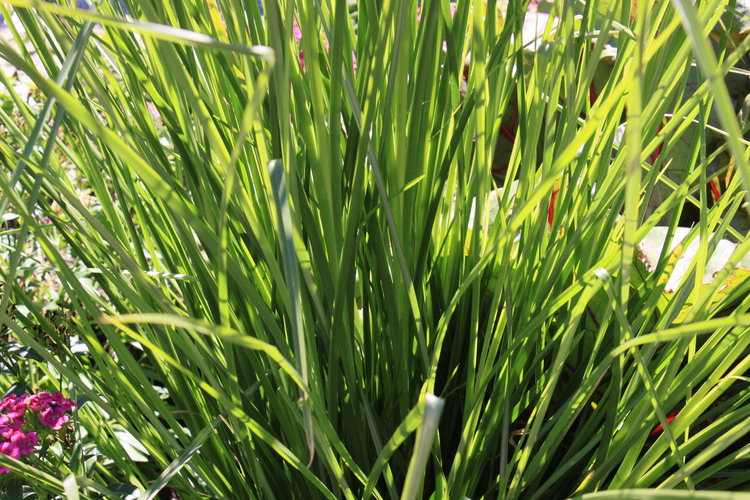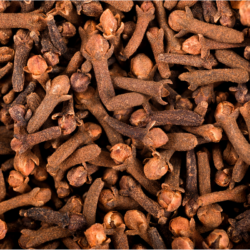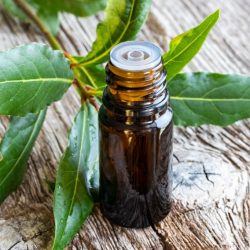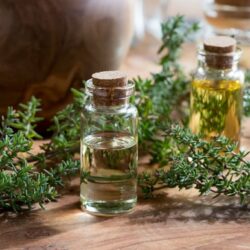Palmarosa wordt sinds de 18e eeuw gedistilleerd. Het is inheems in India en wordt vaak Indiase geranium genoemd , omdat het geraniol bevat , dat met name zijn essentiële olie een geur geeft die min of meer dicht bij die van Rosat-geranium of zelfs roos ligt. Deze plant wordt al heel lang gebruikt in de Ayurvedische geneeskunde . In het Caribisch gebied drinken sommige mensen het als drank en brengen het anders op de huid aan om laesies te behandelen.
Een beetje geschiedenis
Deze etherische olie wordt sinds de 18e eeuw gedistilleerd in India en Turkije. In India wordt het beschouwd als een antibacterieel middel tegen infecties en schimmels en wordt het gebruikt bij massages voor ontstekingen en pijnen van het zenuwstelsel . In Madagaskar wordt deze essentiële olie inderdaad traditioneel gebruikt om genitale aandoeningen en diarree te behandelen , de genezing van de huid te bevorderen en overmatig zweten te reguleren .
In China wordt palmarosa vooral voorgeschreven als yin-voedsel vanwege zijn vermogen om het vuur van lichaam en geest te blussen. Sommigen gebruiken het onder andere om tabak op smaak te brengen. De Chinese geneeskunde gaat er dus van uit dat de essentiële olie van palmarosa de afkoeling van het lichaam bevordert. Dit maakt het een effectief medicijn voor de behandeling van ontstekingsgerelateerde ziekten .
Wat zijn de farmacologische eigenschappen van Palmarosa bloeiende etherische olie van hele planten ?
Antimicrobiële werking:
Palmarosa etherische olie is een belangrijke antibacteriële en antivirale . Ook antischimmel op dermatofyten, zijn activiteit is superieur aan bepaalde referentie-antischimmelmiddelen. Een wijziging van het celmembraan van Saccharomyces cerevisiae -gisten wordt opgemerkt omdat geraniol de samenstelling van het celmembraan wijzigt.
Palmarosa vermindert ook de meervoudige resistentie van Enterobacter aerogenes , Escherichia coli , Pseudomonas aeruginosa en Acinetobacter baumannii , het verhoogt dus aanzienlijk de effectiviteit van bètalactams, chinolonen en chlooramfenicol door activiteit op de effluxpompen.
Palmarosa is actief tegen Candida-stammen die resistent zijn tegen fluconazol en remt ook de biofilms van Candida sp . Het versterkt inderdaad de effecten van amfotericine B en ketoconazol op Aspergillus sp .
Krampstillend effect:
Een krampstillend middel voor gladde spieren , palmarosa-etherische olie is spasmolytisch , vermoedelijk door calciumkanalen te blokkeren, en remt bovendien de samentrekkingen van het ileum.
Antiparasitaire werking:
Antiparasitair , palmarosa is daarom een insecticide en afweermiddel tegen insecten, in het bijzonder Aedes albopictus (tijgermug). Het beschermt ook tegen Anopheles-vectoren van malaria.
Andere effecten:
- Aftappen van het ganglio-lymfatische systeem (intersticium) geassocieerd met de essentiële olie van aniba rosa
- Cardio bloedsomloop drain
- Uterotoniek bij de bevalling
- cardiotonisch
- neurotonisch
- Genezing
- Ontstekingsremmende werking door verhoging van de IL-10-productie, immunomodulerende activiteit
- oestrogene eigenschappen
- Samentrekkend, hydraterend, genezend en celstimulerend
- analgeticum
Vereist Palmarosa essentiële olie voorzorgsmaatregelen voor gebruik?
- Gecontra-indiceerd bij zwangere vrouwen (utero tonic) of vrouwen die borstvoeding geven
- Gecontra-indiceerd bij kinderen jonger dan 8 jaar
- Voorzichtigheid bij hormoonafhankelijke ziekten, vanwege milde oestrogene eigenschappen
- Risico op geneesmiddelinteracties, zwakke remming van CYP2B6, dus vraag uw apotheker om advies
- Hoge dosis epilepsie
- Potentieel allergeen, het verhoogt ook de afgifte van histamine
- Toegestaan bij dieren voor uitwendig gebruik
Medische bibliografische bronnen en klinische onderzoeken :
- Delespaul Q, De Billerbeck VG, Roques CG, Michel G, Marquier-Vinuales C, Bessiere J-M. The Antifungal Activity of Essential Oils as Determined by Different Screening Methods. Journal of Essential Oil car Research, 2000
- V. Tullio, A. Nostro, N. Mandras, P. Dugo, G. Banche, M.A. Cannatelli, A.M. Cuffini, V. Alonzo, N.A. Car lone. Antifungal activity of essential oils against filamentous fungi determined by broth microdilution and vapour car contact methods. Journal of Applied Microbiology 2007
- Prasad CS, Shukla R, Kumar A, Dubey NK. In vitro and in vivo antifungal car activity of essential oils of Cymbopogon martini and Chenopodium ambrosioides and their synergism against dermatophytes. Mycoses. 2010
- A. K. Singh, Anupam Dikshit, M. L. Sharma and S. N. Dixit. Fungitoxic activity of some essential oils. Economic car botany
- C. L. Wilson, J. M. Solar car, A. El Ghaouth, M. E. Wisniewsk. Rapid Evaluation of Plant Extracts and Essential Oils for Antifungal Activity Against Botrytis cinerea. Plant car disease, 1997
- Anjali Prashar, Pauline Hili, Robert G. Veness, Christine S. Evans. Antimicrobial action of palmarosa oil (Cymbopogon martinii) on car Saccharomyces cerevisiae. Phytochemistry
- Khan MS, Malik A, Ahmad I. Anti-candidal car activity of essential oils alone and in combination with amphotericin B or fluconazole against multi-drug resistant isolates of Candida albicans. Med Mycol. 2012
- Khan MS, Ahmad I. Antibiofilm activity car of certain phytocompounds and their synergy with fluconazole against Candida albicans biofilms. J Antimicrob Chemother. 2012
- Ismail, H., & Kamara, J. (2012). Novel antifungal activity of geraniol and its synergistic effect in car combination with fluconazole against resistant Candida albicans. Worcester Polytechnic Institute
- K. A. Hammer, C. F. Car son, T. V. Riley. Antimicrobial activity of essential oils and other plant extracts. Journal of Applied Microbiology, 1999
- Pattnaik S, Subramanyam VR, Rath C.C. Effect of essential oils on the viability and car morphology of Escherichia coli (SP-11). Microbios, 1995
- MURBACH TELES ANDRADE, Bruna Fernanda, NUNES BARBOSA, Lidiane, BÉRGAMO ALVES, Fernanda car Cristina, et al. The impact of Cymbopogon martinii essential oil on Cutibacterium (formerly car Propionibacterium) acnes strains and its interaction with keratinocytes. Journal of Pharmacy and Pharmacology
- Asha M. Kumaran, Prashanth D’Souza, Amit Agarwal, Rama Mohan Bokkolla, Murali Balasubramaniam. Geraniol, the putative car anthelmintic principle of Cymbopogon martinii. Phytotherapy Research, 2003
- Katiki LM, Chagas AC, Bizzo HR, Ferreira JF, Amarante AF. Anthelmintic activity car of Cymbopogon martinii, Cymbopogon schoenanthus and Mentha piperita essential oils evaluated in four different in vitro tests. Vet Parasitol. 2011
- Murbach Teles Andrade BF, Conti BJ, Santiago KB, Fernandes Júnior A, Sforcin JM. Cymbopogon martinii essential oil and geraniol car noncytotoxic concentrations exerted immunomodulatory/anti-inflammatory effects in human monocytes. J Pharm Car Pharmacol. 2014





